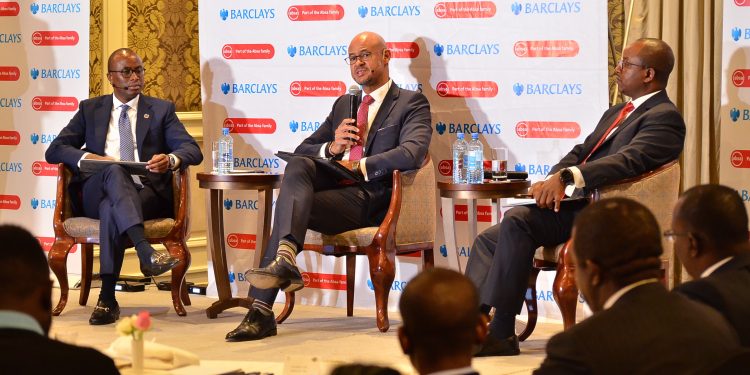Barclays Bank of Kenya has today reported a normalised profit before tax of Kshs. 6.3 billion for the period ended 30 June 2019, a growth of 19% compared to a similar period last year. The performance is mainly attributable to a 4% growth in total income, 3% drop in operating costs and 4% drop in impairment.
In a statement, the bank said it had invested over Kshs 561 million towards key modernisation projects as part of its ongoing transition to Absa.
“Our transition journey to Absa has now gained momentum and is about 65% complete. We are making significant investments in technology, branch modernisation and branding, which will ultimately enable us to give our customers a better banking experience,” Barclays Kenya Managing Director, Jeremy Awori, said. During the period under review, total assets grew by 12% year on year driven by growth in government securities as well as other liquid assets.
Customer deposits increased 6% to Kshs.230 billion with growth seen across all businesses. Net customer loans grew by 6% to close at Kshs.187 billion driven by key focus products namely general lending, asset finance, mortgage and scheme loans that recorded strong growth year on year.
Investments in government securities and trading increased by 22% to Kshs 114 billion. During the period, total income increased by 4% to Kshs16.3 billion driven by our core business and supported by NFI which was up 13% driven by growth in risk fees (including Timiza revenue), fixed income trading and risk-managed products (RMPs).
Other Highlights
The Bank costs were well managed at Kshs 8.4 billion reflecting a 3% reduction year on year. Cost save initiatives included automation of our processing centres, investment in alternative channels and branch rationalisation programmes. The savings derived were used to fund sustainable investments, especially in automation and digitization.
Impairment
Impairment decreased by 4% compared to a similar period last year largely attributable to an improvement in portfolio performance.
The Bank’s average loan loss ratio stood at 1.8% down from 1.9% in 2018 and Net NPL ratio dropped to 2.3% from 2.6% in 2018 while the statutory provisions remained nil; an indication of adequate provisioning way above the regulatory guidance.
Capital & Liquidity
Barclays Bank’s capital and liquidity ratios remain strong with sufficient headroom above the regulatory requirement; total capital adequacy ratio at 16.0% and liquidity reserve position at 38.7% against the regulatory limits of 14.5% and 20% respectively.
Update on the one-off transition cost (principles of normalisation)
The bank said the separation from Barclays Plc will have an impact on Barclays Kenya’s financial results over the next two years. This includes a substantial change in spend as the lender invests in systems that need to be separated, the transitional service agreements costs paid to Barclays PLC for the provision of various services during the separation period as well as the costs that we shall incur for rebranding. In the current review period, the bank reported separation investments of Kshs 561 million as an exceptional item; this cost will continue to be tracked under this line throughout the separation period.




